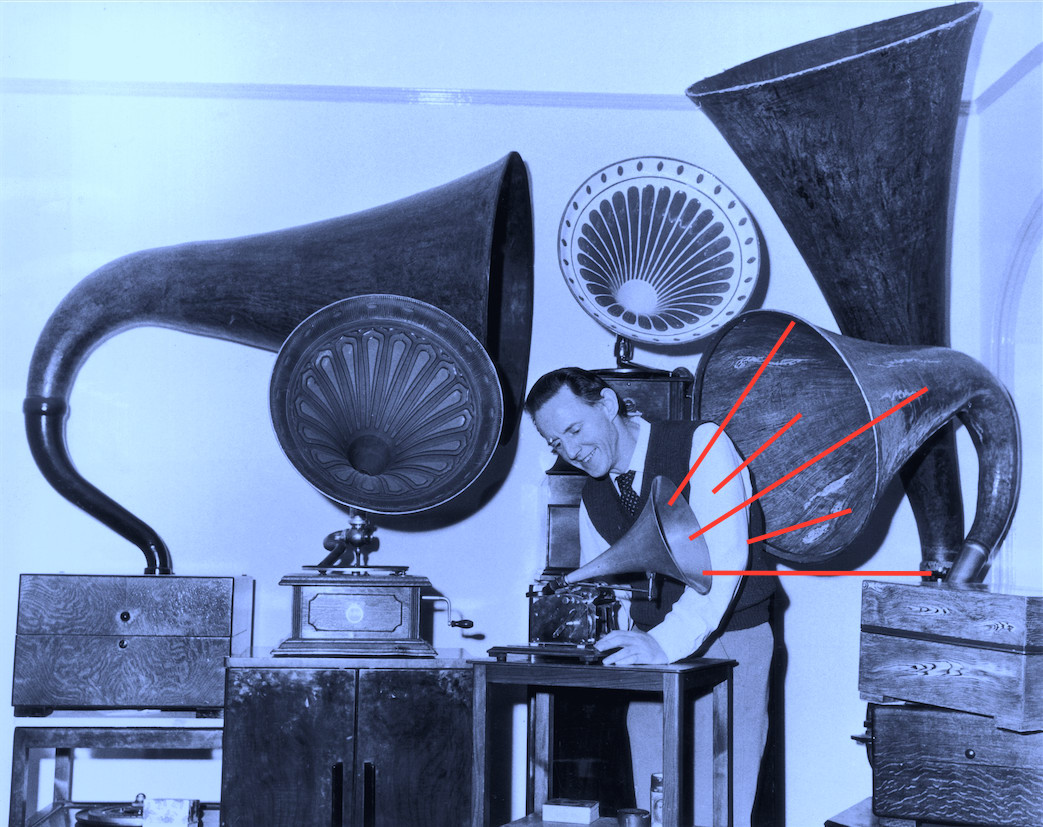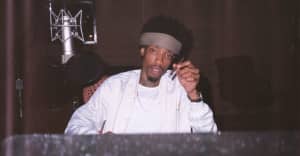 Getty Images: Fox Photos/Hudson Archive
Getty Images: Fox Photos/Hudson Archive
On June 30th, Apple will launch Apple Music, a one-stop destination for streaming audio, radio, and artist-to-fan interaction. Apple's service is poised to be the first music source since mainstream CD store chains to have something resembling a monopoly on the listening market—the software will come preloaded on future iPhones, and will most likely flow seamlessly into the world's largest music retailer, the iTunes Store. The announcements have raised questions about small labels, big business, and the homogenization of taste, but they may also have big implications for the way music will sound in the future.
We tend to think of MP3s as the offspring of the CD. In the old days, you would slide your Sisqo or Strokes album into your computer tower and rip the songs off the disc; in just a few minutes, you'd have a dozen or so fresh new files to play, pause, share, drag, and drop as you wished. Despite being digital files, MP3s are still loosely thought of as physical units of music, with tangible properties: an MP3 is still something you can buy and "own," and two different MP3s of the same song may not sound the same, in mix or quality. But as streaming services become more ubiquitous, our sense of music as physical units (songs, singles, albums, or files), may give way to something more resembling Netflix: a feed maintained by a private source, operating independently of the creators who populate it and the users who consume it.
Revisiting the history of the compact disc offers some context. CDs didn't pop off just because they were shiny, high-quality, and easy to frisbee across the room: the technology was invented, standardized, marketed, and distributed by Sony, whose label division pegged the new format to major album releases. Billy Joel's 1982 record, 52nd Street, was the first to be released on compact disc, distributed by Columbia/Sony in Japan and marketed in tandem with the Sony CDP-101, one of the earliest home CD players. Once the CD format overtook the audio cassette, artists were encouraged to tailor album run-times and recording practices to the new medium; the company that distributed the songs, the CDs, and the CD players won on all three ends. "Back in the day, all of the labels had deals with the distribution companies that they had to turn in those 1630, ¾ inch video tape, like a giant VHS tape, for the master," engineer and longtime Kanye West collaborator Mike Dean explained to The FADER during a recent phone interview. "Sony owned the label and Sony owned the tape machine company. And then they had interest in all the mastering places. They want to keep selling that tape."
Every album you've ever listened to has a "master," the original recording from which all CDs and digital files are copied. The mastering process accounts for things like consistent volume levels between tracks, and against comparable music. When you skip through an album, no one track is louder or quieter than another, and if you toggle songs between two different albums, they're most likely close in volume as well. Mixing makes kickdrums fat, mastering makes all kickdrums equal. Although CDs have long been edging toward obsolesce, mixing and mastering practices optimized for CDs, and by extension, MP3s, have long been the industry norm. Apple Music will reportedly stream only 256K AAC files, Apple's own digital audio format. AAC files are similar in size and sound quality to MP3s, and are currently the default file format for sale in the iTunes Store.
Since 2012, Apple has provided artists and mixing engineers with a set of guidelines for mixing and mastering their music specifically for Apple's AAC format and devices; if you visit their "Mastered For iTunes" page today, you can even download a suite of plug-ins for optimizing your songs for the store. "For decades, the standard for consumer digital audio has been the compact disc, and most mastering has been done with CDs in mind," the company explains in a 2012 PDF brief you can download from that same page. "In recent years, the quality of digital music delivery has vastly increased, as has the number of digital music sales, with iTunes being a key driver of those sales. With more than 16 billion downloads encoded as AAC to date worldwide, AAC is the new standard for digital music. It only makes sense to create masters specifically for this format."
“If they put a limit on how loud you can be, people will start manipulating shit to hack that. It’s gonna make people make shittier music.” -Mike Dean
Although not mandatory, the Mastered for iTunes guidelines may be all but unavoidable for engineers and artists who hope to engage with Apple Music as the platform becomes the primary means of music playback on Apple devices. "Keep in mind that Apple has sold more than 250 million iOS devices, and that many, many people around the world are listening to music on their iPods, iPhones, or iPads," the brief explains. "You’re being provided with all the tools you’ll need to encode your masters precisely the same way the iTunes Store does." One specific chunk of the brief addresses a recent trend in engineering known colloquially as the "Loudness Wars": as engineers are getting wilier, shit is getting louder. "Many artists and producers feel that louder is better," the company writes, in a section that warns against the clipping and dithering that comes with loud mixes, and suggests mastering for volume controlling technology like Apple's Sound Check. "While some feel that overly loud mastering ruins music by not giving it room to breathe, others feel that the aesthetic of loudness can be an appropriate artistic choice for particular songs or albums."
That aesthetic is one Mike Dean holds dear. The prolific Houston producer and engineer has spent nearly thirty years making records knock, from the formative trunk-rattling rap pioneered by Scarface and the Geto Boyz to the mind-splitting synths and snares on Yeezus. Over the phone, he's understandably curious about the implications of Mastered for iTunes for music volume: "They’re putting a limit on how loud you can be," he explains. "It’s going to be like the movies soon. The sound on movies can’t go over a certain level. Same with TV. There's written-in-stone TV levels that you can hit, volume levels. That’s why some commercials are louder than others: they take all the bass out and turn up all the midrange and it just sounds too loud. If they put a limit on how loud you can be, people will start manipulating shit to hack that. It’s gonna make people make shittier music."
Today's engineers and producers, particularly those working outside of the major label system, have mixed and mastered their music with less of a singular standard in mind, tailoring the levels to the experience they hope to provide. This idea of hearing music as the artist intended has become a crucial-selling point in consumer-facing music technology: it was the core messaging of Apple-subsidiary Beats when they first broke, and is now the calling card for Apple's newest competitor, TIDAL, who promise the highest-fidelity streaming available. "Some people really care about, and are really passionate about their music and want it to be heard the way it was intended," Jay Z remarked at a recent NYU lecture. But what if the artist intends for it to be a bit grainy, or loud, or different? For all the software, speakers and streams, Dean sees a human touch being lost: "The way the artist intended is the way I intended," he says.
Labels used the same promise of true-to-studio fidelity to market the compact disc in the '80s. Still, the question remains today whether the sound of our music will be guided by the artists making it, the engineers mixing it, or the music services hosting it. Once more, artists who creatively wield this freedom independently from regulated formats like radio and TV may be forced to smooth out and turn down. Consider the jagged clipping that gives Death Grips their edge, the fuzzy hiss of Moses Sumney's four-track recordings, or the club-shaking bang of Young Thug's bedroom closet beats. As Atlanta producer Sonny Digital told The FADER: "This whole 'going by the book' shit, getting shit matched up, who says that is the right way? Who decided that was the right way to listen to some shit? That's not the right way in my eyes. With music, it's so much freedom in that shit. It's no rules to this... People feel a certain way when they hear you a certain way. Nigga might hear you sounding all gritty, nigga might feel that shit, like, 'I know where this came from.'"
UPDATE: The legendary Mike Dean gave some updates via twitter, letting us know he's done some further digging as an approved Apple mastering engineer. Look out for his full Beat Construction interview coming soon.
